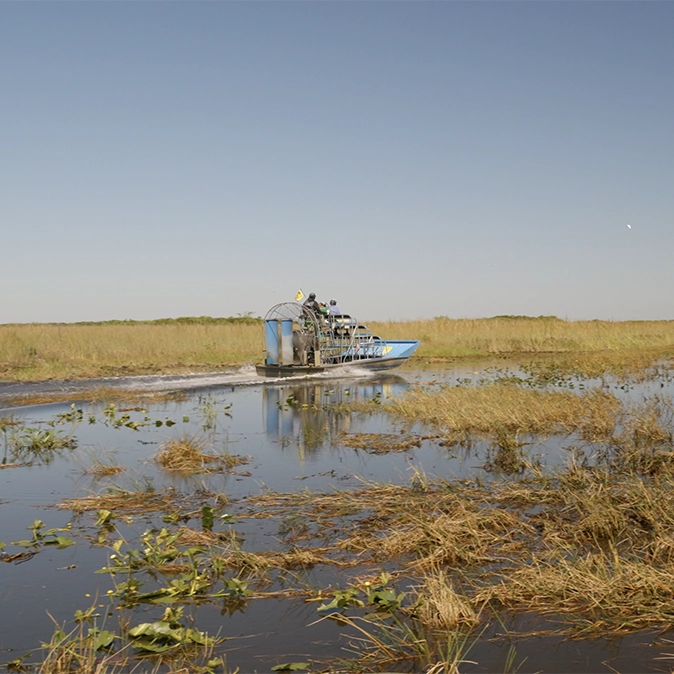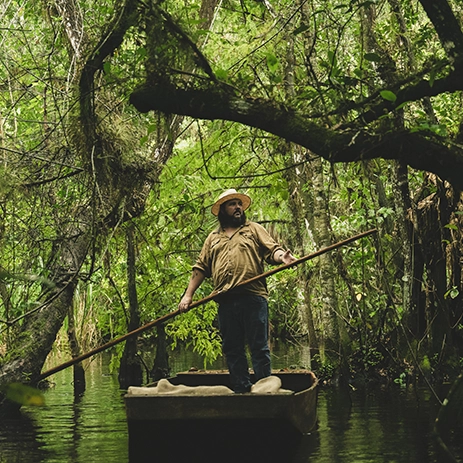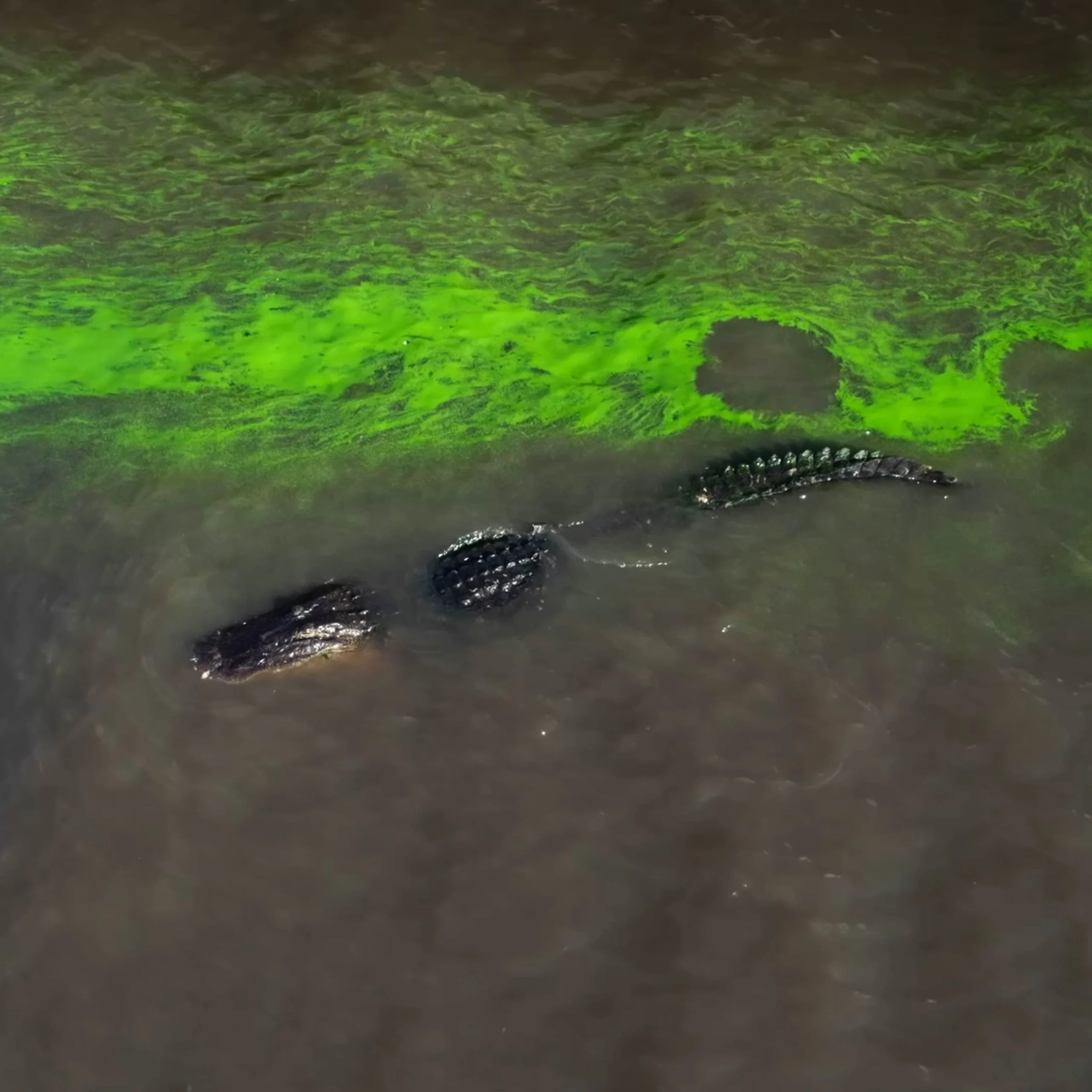by | August 19, 2025
At 29, She’s the First Woman to Win Florida’s Python Challenge
Taylor Stanberry broke the record for most pythons ever caught during the 10-day competition.
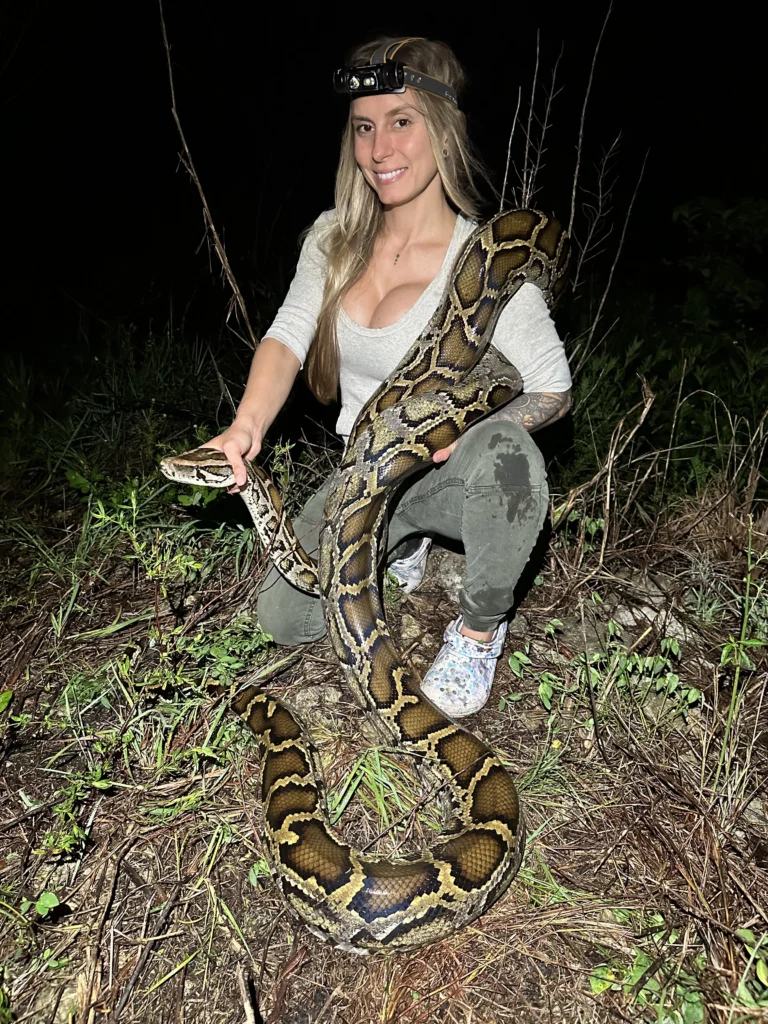
When the sun sets over the Everglades, 29-year-old Taylor Stanberry gets to work. She heads out into the brush barefoot or with socks, her trusty pair of Crocs in tow in case the terrain gets really tough. Then she starts her nightly wade through Florida’s River of Grass to watch for the glint of scales reflecting her headlamp’s glow.
As a professional python hunter, this has been Stanberry’s summer night routine for a decade. Recently, she was the first woman ever to win the grand prize in Florida’s Python Challenge, where she caught 60 invasive snakes in just 10 days—the most of any individual in the competition’s history.
“There’s still, of course, guys saying it’s rigged or whatever because a girl won,” Stanberry says. “They would never say that if a guy won. Some people just still aren’t used to women winning. So I think it’s so fun (to see that) women won in most of the categories for this challenge. We could be just (as good) if not better than men.”
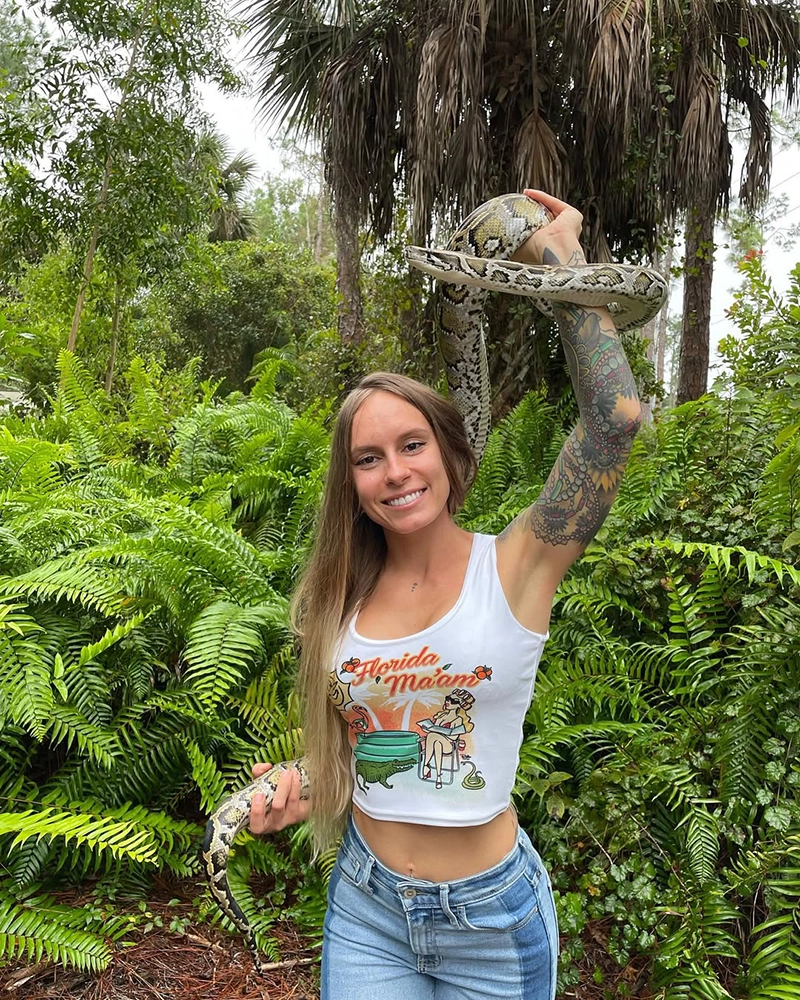
The competition was created in 2013 as a way to manage the invasive python population in the Everglades. A population which, since the first Burmese python sighting in the area in 1979, has skyrocketed, jeopardizing native wildlife as the contrictors spread through the swamp with no natural predators. The python presence has been linked to severe drops in native species, including a nearly 99% decrease in raccoon and opossum populations.
No one knows just how many of the ravenous reptiles have made the Everglades their home, although a conservative estimate is tens of thousands. That’s a tough number to combat, even with annual competitions that bring in the most skilled python hunters. “Every python removed from the Florida landscape is one less invasive snake impacting our native wildlife and ecosystems,” says Lisa Thompson, a spokesperson for the Florida Fish and Wildlife Conservation Commission’s Division of Habitat and Species Conservation.
Last year, the winning total was just 20 pythons. This year’s higher numbers across the competitors might be because of the timing. The 2025 competition took place in July, when python eggs are hatching and females are very active, making them more susceptible to capture. As one of the best hunters in the area, Stanberry set a record not only as the first woman to win the entire competition, but with the highest python total in the competition’s history.
I’ve noticed a small population decrease in pythons and a slight increase of native wildlife like the bobcats or the bunnies or the native snakes. It’s just kind of a daily battle, but at least we’re trying.
—Taylor Stanberry
At the top of this year’s Challenge leaderboard, Stanberry is joined by other expert huntresses, including Donna Kalil, who consistently dominates year after year. This time, Kalil came in a close second to Stanberry with 56 snakes.
“I didn’t realize I was the first female ultimate grand winner,” Stanberry says. “There’s always been females winning in their category. So I was like, ‘Oh, wow, that’s awesome being the first one especially when there’s so many other awesome women.’”
Usually, Stanberry prefers to get out of the Glades and avoid the crowds of competition week, but with no travel plans this year, she entered. Although this was Stanberry’s first Python Challenge, she’s no newbie. She’s been hunting pythons since she was just 19, and has been a paid python hunting contractor by the State of Florida for nearly seven years.
Stanberry stands at just below 5 feet, but that hasn’t stopped her from wrangling pythons nearly three times her size. “It is funny seeing guys still think I can’t do it because I’m a girl and I’m small,” she says. “It’s like, I’m stronger than a lot of these big guys.”
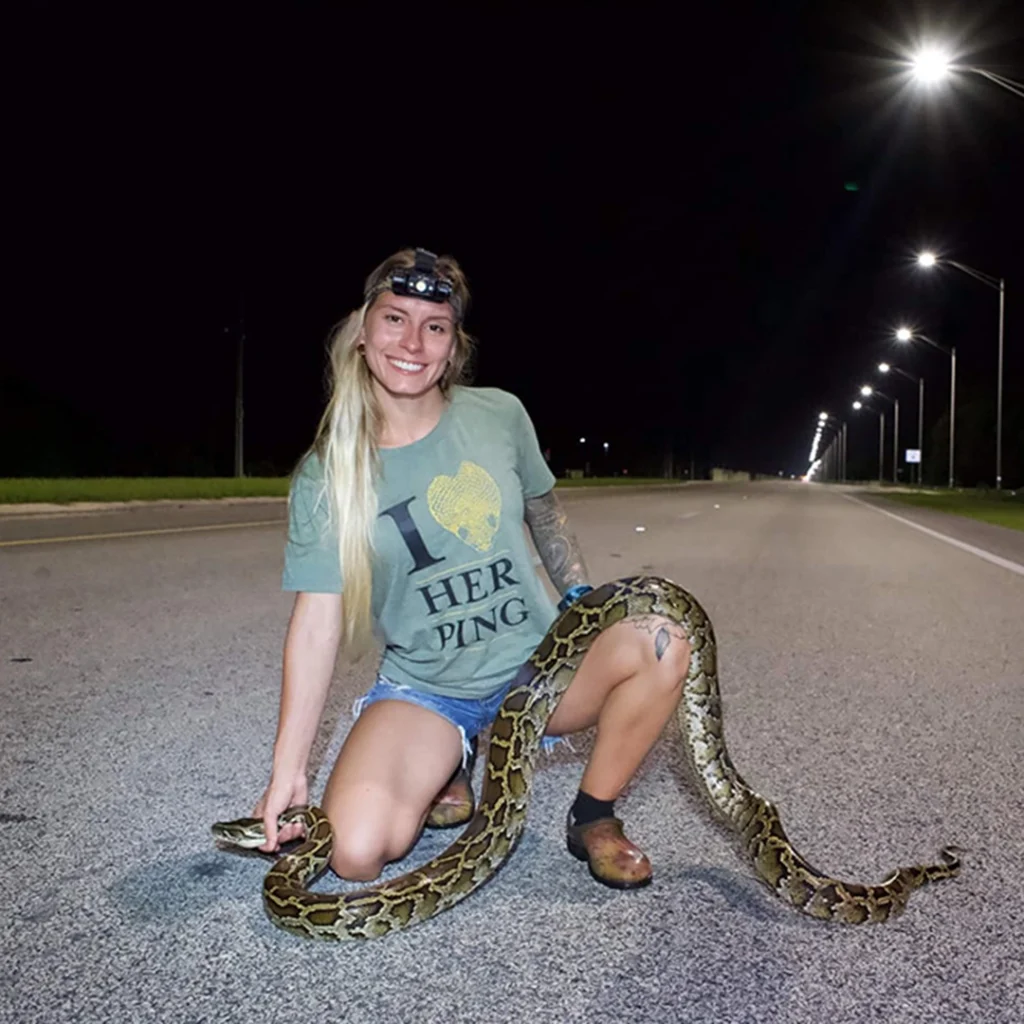
When she isn’t sleuthing out snakes in the Everglades, she’s responding to calls from homeowners who find venomous reptiles in their yards. Whether finding invasives or relocating reptiles, she takes pride in doing what she can to help Florida’s native wildlife.
“A lot of people travel here because they’re just excited to kill a snake. But that’s really not why I do it. Even though I’ve been doing it for many years, I still hate killing them. I still respect these animals so much, and I love all snakes. So it can be hard to be like ‘I love snakes, but look what I do for a living.’ But really, I’ve noticed a huge population decrease in native wildlife, so I just remind myself, ‘Hey, this will help the rattlesnakes. This will help the corn snakes.’ I don’t like when people kill them just to kill them. It has to be for a greater reason.”
This year, hunters removed 294 pythons from the Everglades during the competition. That’s the most of any Python Challenge so far, but it’s a small fraction of the total estimate of invasive pythons slithering in the sawgrass. Still, for Stanberry, every little difference matters.
“It’s always going to be an ongoing issue. I’m not going to lie and be like, ‘We’re going to get rid of every little one,’ but every one that’s gone … really helps out the native wildlife,” she says. “In certain areas that we hunt, I’ve noticed a small population decrease in pythons and a slight increase of native wildlife like the bobcats or the bunnies or the native snakes. It’s just kind of a daily battle, but at least we’re trying.”
For more stories in the Florida Everglades, click here.
About the Author
Helen has an aptitude for finding alligators and a passion for covering the weird and wonderful of Florida. The Tallahassee native graduated with her bachelor's degree from the Medill School of Journalism at Northwestern University. At Flamingo, she helps organize advertising and write stories (usually about Florida's fantastic fauna).

